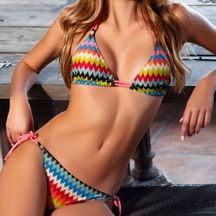Content Menu
● Introduction
● The Importance of Sports Bras
>> 1. Support and Comfort
>> 2. Types of Support: Compression vs. Encapsulation
>> 3. Preventing Tissue Damage
>> 4. Enhancing Performance
● What Does Sports Bra Do?: Core Functions
● Types of Sports Bras
● Key Benefits of Sports Bras
● Features to Look For
● How Sports Bras Work: Science & Design
● Sports Bra Selection Guide
● Tips for Wearing and Caring
● Sports Bra Use Beyond Fitness
● Conclusion
● Frequently Asked Questions (FAQ)
● Citations:
A sports bra is an essential item for anyone engaging in physical activity, providing crucial support, minimizing discomfort, and maintaining breast health during exercise. This comprehensive article explores the answer to "what does sports bra do," highlighting how sports bras work, their types, benefits, features, usage tips, and much more, with visuals and a detailed FAQ section at the end.[1][2][3][4][5]
Introduction
For anyone who participates in sports or fitness activities, understanding *what does sports bra do* is vital to comfort, performance, and health. Sports bras are designed specifically to counter the stresses and strains physical activities place on the body, making them indispensable for athletes and casual exercisers alike.[2][3][4][5][1]
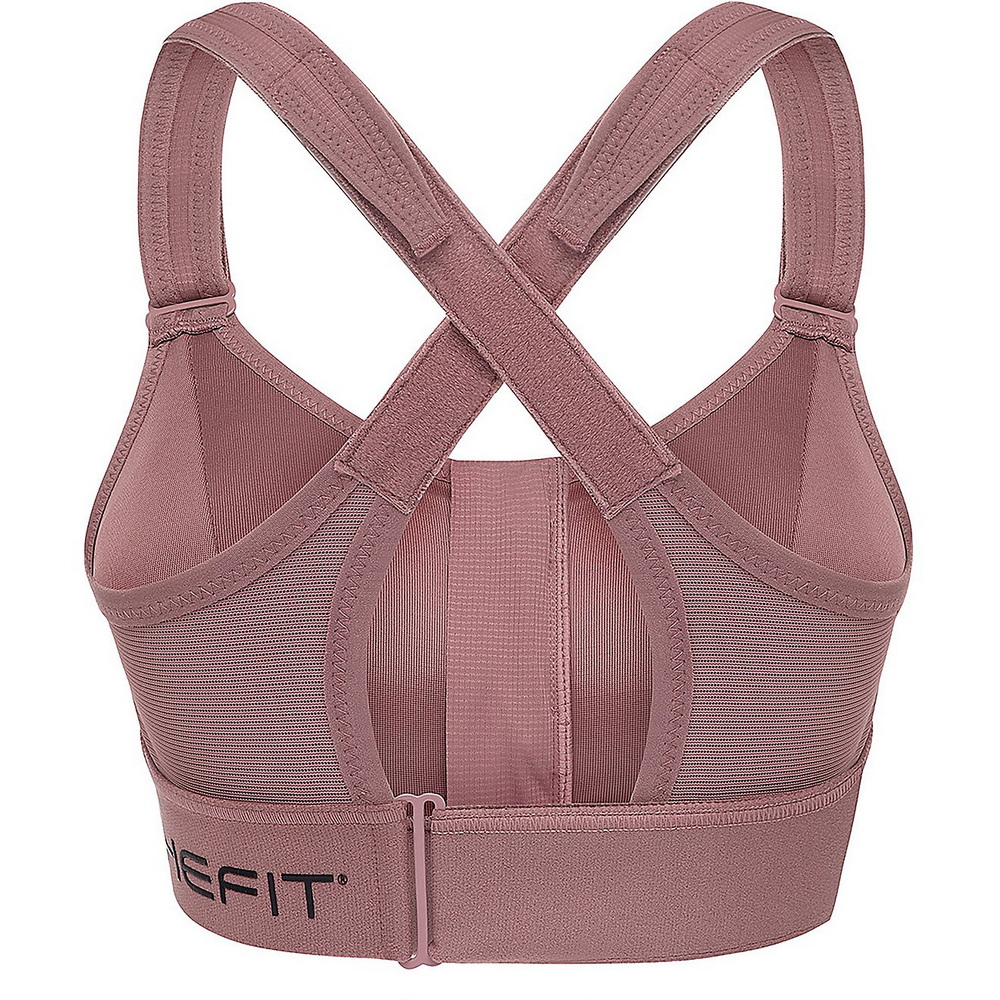
The Importance of Sports Bras
1. Support and Comfort
The primary function of a sports bra is to support the breasts during physical activity. This support is crucial because breasts are composed of fatty tissue and ligaments that can be sensitive to movement. Without adequate support, women may experience discomfort, pain, and even long-term damage to breast tissue. Sports bras are designed to hold the breasts in place, reducing movement by up to 83% during exercise, which is vital for maintaining comfort and performance.
2. Types of Support: Compression vs. Encapsulation
Sports bras generally fall into two categories: compression and encapsulation.
- Compression Sports Bras: These bras compress the breasts against the chest wall, minimizing movement. They are ideal for low to medium-impact activities, such as yoga or walking.
- Encapsulation Sports Bras: These bras feature molded cups that support each breast individually. They are better suited for high-impact activities like running or aerobics, as they provide more support and reduce bounce.
3. Preventing Tissue Damage
Wearing a sports bra can help prevent potential tissue damage caused by excessive movement. The ligaments that support breast tissue can stretch and become damaged over time, leading to sagging and discomfort. A well-fitted sports bra can mitigate these risks by providing the necessary support during workouts.
4. Enhancing Performance
A properly fitted sports bra can enhance athletic performance. When women feel comfortable and supported, they can focus on their workout without the distraction of discomfort. Studies show that 85% of women who wear sports bras report improved confidence and enjoyment during exercise.
What Does Sports Bra Do?: Core Functions
A sports bra answers a fundamental need: it provides support and stabilizes the breasts during physical activity. Unlike regular bras, sports bras are engineered to minimize breast movement, which can lead to pain, discomfort, and long-term damage to breast tissue. The main functions of a sports bra include:[3][5][1][2]
- Reducing breast movement by providing either compression or encapsulation (holding each breast separately).
- Alleviating discomfort and pain that can arise during exercise due to excessive movement.[5][1]
- Protecting Cooper's ligaments, maintaining breast firmness and shape.[6][3]
- Improving athletic performance by allowing greater freedom of movement and focus.[1][3]
- Preventing chafing and irritation through the use of moisture-wicking, seamless fabrics.[3][1][7]
Types of Sports Bras
Sports bras come in multiple designs, each offering unique degrees of support for different activities:[8][9][1]
- Low-impact sports bras: Ideal for yoga, walking, or Pilates. They use softer materials and are meant for activities with minimal breast movement.[1]
- Medium-impact sports bras: Suitable for cycling, weight training, and dancing. They add more structure and often have wider straps and bands.[9][1]
- High-impact sports bras: Designed for running, aerobics, and intense sports. These provide maximum support, often combining compression and encapsulation for greatest control.[10][1]
*Compression* bras restrict movement by pressing breasts against the chest; *encapsulation* bras hold each breast separately in a molded cup. Some sports bras combine both methods, especially for high-impact support.[10][9][5][1]
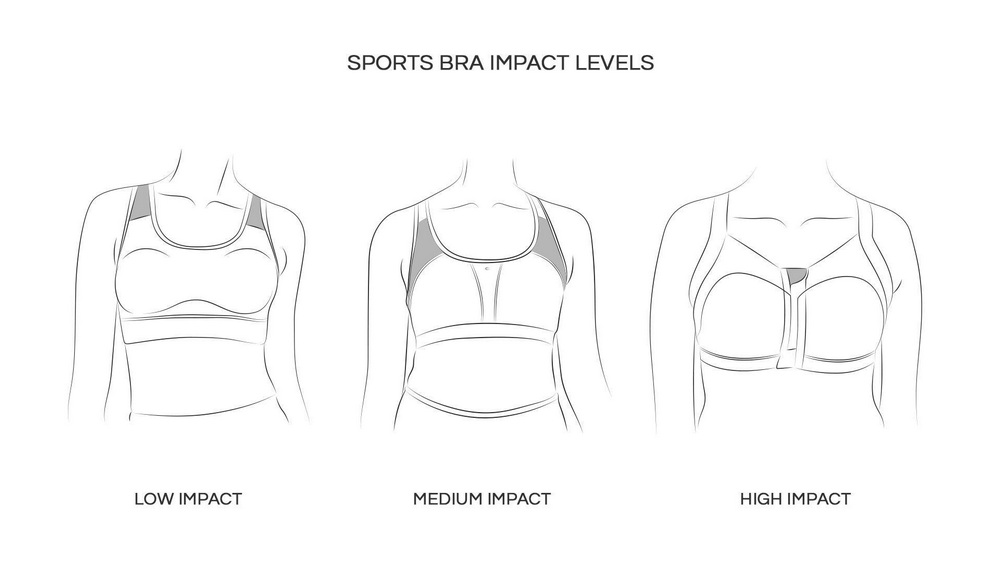
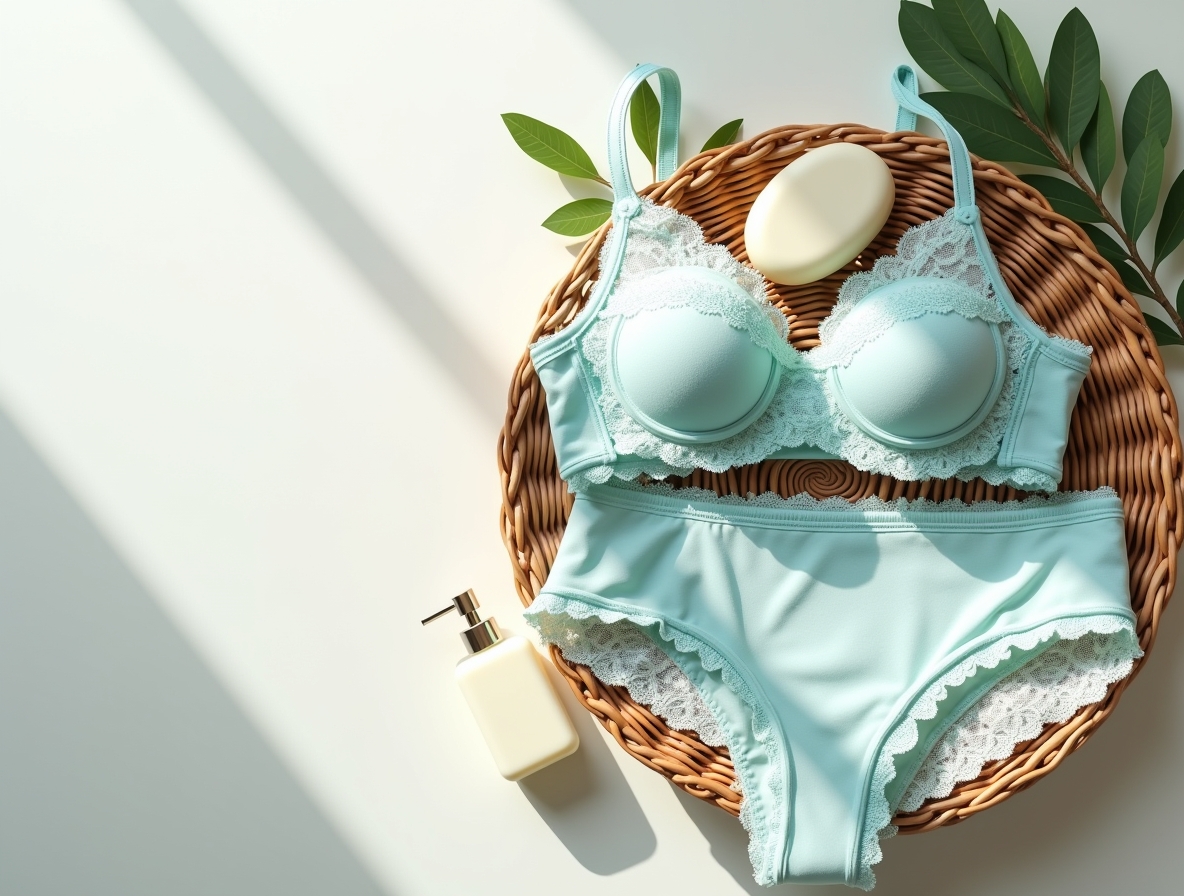
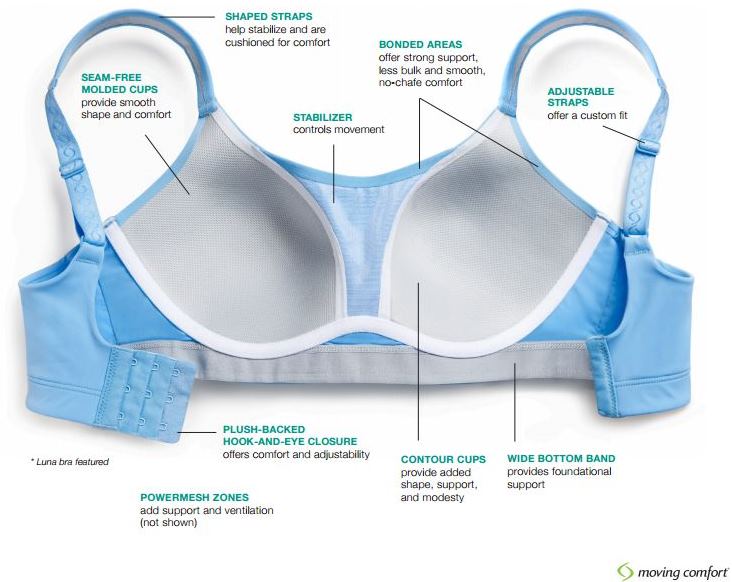
Key Benefits of Sports Bras
Athletes and fitness enthusiasts regularly ask, *what does sports bra do* to enhance workouts and health? Science and experience agree on several benefits:[6][5][3][1]
- Greater support and stability: Reduces bounce, discomfort, and potential tissue damage.[5][3]
- Prevents breast pain: Lessens soreness and tenderness after exercises that involve repetitive bouncing or impact.[3][6]
- Improves posture: Distributes bust weight, reducing strain on shoulders and neck, thus promoting correct alignment.[6][3]
- Reduces risk of sagging: Guarding against stretching of the breast's internal ligaments (Cooper's ligaments), protecting firmness.[3][6]
- Enhanced comfort and freedom of movement: Ergonomic fits and seamless designs reduce skin irritation and rubbing.[1][3]
- Moisture management: Use of breathable, quick-drying fabrics helps prevent sweat build-up and chafing.[6][1][3]
- Boosted sports performance: Users can concentrate on their activity without worrying about discomfort or distraction.[4][1][3]
- Daily versatility: Many find sports bras comfortable enough for daily wear, not just during workouts.[11][12][3]
Features to Look For
Understanding *what does sports bra do* also means selecting the right features, which include:[13][9][11]
- Adjustable straps: Offer a custom fit, support different bust sizes, and prolong bra lifespan.
- Back closure: Makes for easier wearing and adjustment, often with hooks.
- Underwire: Adds support, minimizes movement, especially for larger busts.
- Wicking fabrics: Polyester blends, sometimes even wool, actively draw moisture away from skin.
- Strap systems: Racerback (Y-shape), tank top, and crisscross styles provide various support levels and can suit personal style.
How Sports Bras Work: Science & Design
The science behind *what does sports bra do* involves advanced fabric technology, ergonomic design, and biomechanical research. Here's how:[4][5]
- Restraining movement: Compression and encapsulation both slow down breast motion, protect ligaments, and prevent pain.[4][5]
- Shock absorption: Special designs help absorb impacts, dampen vibrations, and keep breasts stable in all three dimensions (up, down, side-to-side).[5][4]
- Muscle relaxation: By minimizing movement and friction, sports bras promote muscle relaxation and reduce injury risk.[4]
Sports Bra Selection Guide
Choosing a sports bra means knowing *what does sports bra do* and matching it to activity type, body shape, and desired features:[14][9][13][10]
1. Assess your activity level: High-impact requires maximum support, while low-impact can use lighter options.
2. Check size and fit: Ill-fitting bras compromise support, and brands offer virtual fitting consultations for perfect sizing.[10]
3. Identify necessary features: Adjustable straps, moisture management, encapsulation or compression—pick for your comfort and sport.
4. Test for comfort: Try moving, jumping, or running in the bra; anything that shifts or binds needs a better fit.
5. Explore style options: Select colors, strap systems, and shapes that match your workout gear or daily clothing.[12][11]
Tips for Wearing and Caring
Maximize the benefits of *what does sports bra do* with proper usage and care:[9][13]
- Replace old bras: Fabrics lose elasticity, compromising support—replace sports bras every 6-12 months.
- Wash gently: Hand washing or delicate machine cycles prolong life; avoid high heat or harsh detergents.
- Rotate bras: Alternate bras if exercising regularly for fabric longevity and hygiene.
- Fitting checks: Regularly assess fit, especially after changes in body size or exercise intensity.
Sports Bra Use Beyond Fitness
*What does sports bra do* outside the gym? Sports bras have grown popular for everyday wear thanks to their comfort and ergonomic design. Many people choose sports bras for travel, lounging, and even casual office wear due to:[11][12][3]
- Breathability
- Seamless fit under clothes
- All-day comfort without underwire irritation[15]
Conclusion
In summary, sports bras play a vital role in providing support, comfort, and protection during physical activities. They help prevent discomfort and potential damage to breast tissue while enhancing athletic performance. When choosing a sports bra, consider your activity level, fit, and fabric to ensure you find the right one for your needs.
Frequently Asked Questions (FAQ)
Q1: What does sports bra do for breast health?
Sports bras prevent excessive bouncing, protect the Cooper's ligaments, and reduce long-term risks of sagging or tissue damage.[5][3]
Q2: Can a sports bra replace a regular bra?
For exercise and many daily activities, yes—especially if comfort and support are priorities. For formal wear, some prefer traditional bras for shape or appearance.[12][11]
Q3: How should I choose the right sports bra?
Pick based on impact level, cup size, strap adjustability, and moisture control. Consider trying multiple styles and brands for optimal fit.[9][10]
Q4: How often should I replace my sports bra?
Depending on frequency of use, every 6 to 12 months is recommended to maintain support and hygiene.[13][9]
Q5: Are sports bras good for all breast sizes?
Yes—there are designs suitable for every bust size, from compression bras for smaller chests to high-support encapsulation bras for larger ones.[13][10][1]
Q6: Do sports bras prevent breast sagging?
They help by reducing strain and stretching of breast ligaments, maintaining firmness, and preventing sagging over time.[3][6][5]
Q7: What materials are best in sports bras?
Polyester blends, nylon, spandex, and moisture-wicking fabrics provide the best combination of comfort, support, and sweat management.[11][13][1]
Citations:
[1](https://www.underarmour.com/en-us/t/playbooks/apparel-gear/sports-bra-benefits/)
[2](https://en.wikipedia.org/wiki/Sports_bra)
[3](https://www.clotsybrand.com/en/blogs/blogue/sujetador-deportivo-8-mejores-beneficios-para-usarlo)
[4](https://illusionslingerie.com.au/blogs/news/understanding-the-science-behind-sports-bras)
[5](https://squatwolf.com/blogs/buying-guides/high-impact-sports-bra-importance-workout)
[6](https://www.clovia.com/blog/5-benefits-of-wearing-a-sports-bra/)
[7](https://unsplash.com/s/photos/sports-bra)
[8](https://knix.com/blogs/knix-blog/impact-levels-sports-bras)
[9](https://www.rei.com/learn/expert-advice/sports-bras.html)
[10](https://www.irunfar.com/best-sports-bra-for-running)
[11](https://www.bombshellsportswear.com/collections/sports-bras)
[12](https://www.champion.com/collections/womens-sports-bras)
[13](https://www.underarmour.com/en-us/c/womens/clothing/sports-bras/)
[14](https://www.gymshark.com/blog/article/how-to-find-the-right-sports-bra)
[15](https://www.gettyimages.com/photos/sports-bras)
[16](https://www.youtube.com/watch?v=oAdB5v2Kic0)
[17](https://www.youtube.com/watch?v=XB0vkrKxWZk)
[18](https://www.oliviabosserteducation.com/photography-education/the-importance-of-wearing-a-sports-bra-tp6Tm)
[19](https://www.goodlife.com.au/blog/benefits-of-the-correct-sports-bra/)
[20](https://www.youtube.com/watch?v=DygBEI6H7-M)
[21](https://www.youtube.com/shorts/wJe7xEWzfwg)
[22](https://www.shutterstock.com/video/search/hot-women-sports-bras)
[23](https://www.youtube.com/watch?v=Kac3N_FT_zc)
[24](https://www.instagram.com/reel/DJmqR2PIfoS/?hl=en)
[25](https://so-sew-easy.com/ultimate-sports-bra-video-released/)
[26](https://stock.adobe.com/search/images?k=sports+bra)
[27](https://www.istockphoto.com/photos/bra-top)
[28](https://www.freepik.com/free-photos-vectors/sport-bra)
[29](https://thenounproject.com/browse/icons/term/sports-bra/)




















